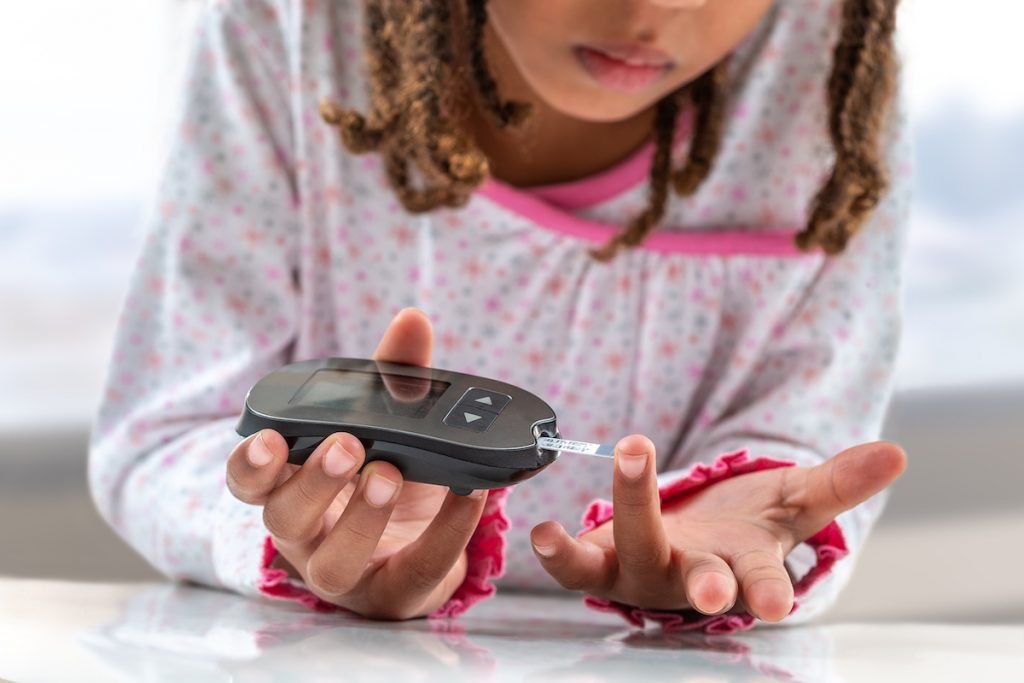6 Symptoms of Diabetes in Children
November 17, 2020

November marks American Diabetes Month, an annual event driving awareness for the diabetes epidemic, the millions living with the disease, and the millions at risk for it. Among those at risk for diabetes are children. Type 1 Diabetes, sometimes referred to as juvenile diabetes, especially impacts children, affecting about 200,000 under the age of 20.
During American Diabetes Month and throughout the year, it’s important to understand the impact of diabetes in children and learn the symptoms to look out for.
Type 1 vs. Type 2 Diabetes
More than 122 million Americans are living with diabetes, which prevents the normal breakdown of food into energy in the body. There are various forms of diabetes, but the two most common are Type 1 and Type 2. Children are more likely to be diagnosed with Type 1 diabetes, but can also be at risk of developing Type 2.
Type 1 Diabetes
Type 1 diabetes results from the pancreas not creating or creating very little insulin, a hormone that helps blood sugar enter cells to be used for energy. The nutrients in food are broken down into a sugar called glucose, which provides energy to the cells. Without insulin, glucose cannot enter the cells and becomes stuck in the bloodstream, leading to high blood sugar levels.
Type 2 Diabetes
With Type 2 diabetes, the body does create insulin, but cells don’t respond normally to it, leading to insulin resistance. Type 2 diabetes most often develops in middle age but has recently become a problem in children and teens due to the correlation of insulin resistance and being overweight.
Symptoms of Diabetes in Children
Symptoms of diabetes in children (and adults) mostly result from high levels of sugar in the bloodstream and the inability to break down the nutrients in food. Here are the symptoms to look out for in your child:
- Frequent urination
Diabetes causes excess glucose to build up in the blood, making it hard for the kidneys to keep up in absorbing and filtering the glucose. When the kidneys cannot keep up with the excess, glucose is excreted into the urine and brings fluid from the tissues along with it, leading to more frequent urination.
While it can be hard to detect increased urination as a symptom of diabetes in children as infants, it is easier to spot in toilet-trained children who may be wetting the bed or having more frequent accidents.
- Increased thirst
With the kidneys working in overdrive and urination becoming more frequent, the body loses more water, leading to increased thirst. It’s hard to quench diabetes-related thirst, as the more you drink, the more you urinate. The cycle will continue until blood sugar levels are normalized.
- Extreme hunger
Diabetes in children can lead to constant hunger because the glucose from food isn’t reaching the cells.
- Weight loss
The combined effect of lost calories from frequent urination and glucose not reaching the cells can cause rapid weight loss in children and adults.
- Fatigue
Fatigue can result from diabetes due to the changes in blood sugar levels associated with diabetes. With glucose unable to enter cells, the cells are deprived of the energy glucose provides.
- Darkened skin (Type 2)
While Type 2 diabetes in children is not as common, it is important to be aware of its symptoms as well. Type 2 diabetes shares many symptoms with Type 1, including increased thirst and urination, fatigue, and weight loss. Darkened skin, often around the armpits and neck, is a specific symptom of Type 2 diabetes resulting from insulin resistance.
Prevention and Management
Type 1 diabetes is neither preventable nor curable. However, it is treatable, and children and adults living with Type 1 diabetes can live a healthy, normal life. Type 1 treatment involves insulin injections to normalize blood sugar levels. A healthy diet and staying physically active are also important in managing diabetes.
Unlike Type 1 diabetes, Type 2 is preventable. Type 2 diabetes can be prevented through various lifestyle changes, particularly when it comes to a healthy diet and weight management. Management for Type 2 diabetes in children and adults involves a healthy diet, regular exercise, blood sugar monitoring, and insulin or other medications.
Talk To A Pediatrician
If your child has symptoms of diabetes, you should consult your pediatrician. They can evaluate your child and help develop a plan to help your child manage and treat their diabetes.
Holly Springs Pediatrics is committed to providing quality care to your kids at all times. That includes being there in uncertain times. We will always prioritize the health and safety of your family. Call our Holly Springs, NC pediatric office at (919) 249-4700 to schedule an appointment or talk to a staff member.
